.
15.10.2015
SpaceShipTwo kehrt zurück zu B. Hydroxyl-terminiertes Polybutadien (HTPB) Treibstoff
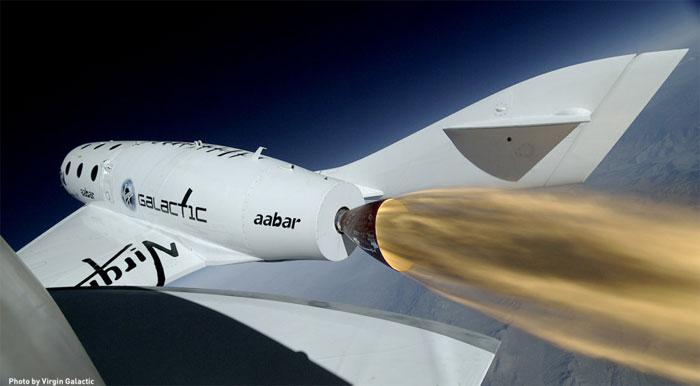
Virgin Galactic's SpaceShipTwo during an April 2013 powered test flight. Credit: Virgin Galctic
-
LAS CRUCES, N.M. — Virgin Galactic is planning to return to a rubber-like fuel when it resumes powered test flights of its SpaceShipTwo suborbital vehicle based on the results of an ongoing series of tests of the spacecraft’s hybrid rocket motor.
Virgin Galactic Chief Executive George Whitesides, speaking at the International Symposium for Personal and Commercial Spaceflight here Oct. 8, said the company had carried out a series of full-duration test firings of the motor recently, which used a rubber-like fuel formally known as hydroxyl-terminated polybutadiene (HTPB).
“I’m pleased to say that we have had really terrific progress” on the vehicle’s propulsion system, he said while showing videos of two recent engine tests, each running about 60 seconds. “We have good combustion quality on these firings.”
Virgin Galactic originally planned to use HTPB fuel for the rocket motor, which also uses liquid nitrous oxide propellant. However, in May 2014, the company announced it was switching to a polyamide fuel, similar to nylon, citing improved performance.
That nylon-fuel motor was flown on SpaceShipTwo’s last test flight in October 2014, when the vehicle broke apart seconds after engine ignition. An investigation led by the National Transportation Safety Board concluded in July that pilot error in prematurely unlocking the vehicle’s feathering system caused the crash, and the motor was not implicated in the accident.
Whitesides did not state at the conference if the rubber or nylon fuel would be used when powered test flights of a second SpaceShipTwo vehicle resumed. However, another company executive, Will Pomerantz, said earlier this year that the company had an “internal horse race” between the two motors, and would fly the one that is the best.
In an Oct. 14 email, Whitesides said that the current design of the rocket motor “baselines” the use of HTPB fuel, a decision that will be finalized after a series of qualification, or “qual,” tests. “We’re focused on qual of that system now, and assuming qual is completed according to plan, we will use that configuration to resume powered test flights,” he wrote.
Whitesides said at the conference that Virgin Galactic was making progress completing the second SpaceShipTwo vehicle. Recent milestones in the vehicle’s development included a fit check of the oxidizer tank for its propulsion system inside the vehicle and new seats for the pilots in the cabin.
The second SpaceShipTwo is very similar to the first, Whitesides said, since the overall design of the vehicle did not figure into the accident. “The airframe itself, we think, is sound. The propulsion system is sound,” he said. “We required very few changes to the vehicle following our test flight accident.”
Whitesides declined to give a schedule for when test flights would resume, saying he didn’t want to put schedule pressure on the team building the vehicle. “We’ll resume flights when we’re ready to do so,” he said. “We’re getting very close now, making great progress. But I don’t want to put undue pressure on them by giving them an artificial timeline.”
The second SpaceShipTwo will go through a test program similar to the first, including a series of “captive carry” flights where it remains attached to its WhiteKnightTwo aircraft, unpowered glide flights, and powered tests. However, there may be fewer test flights, Whitesides said, based on the experience from the original test program.
“Instead of doing five or ten tests to gradually inch up on a particular test point, we’ll be able to get there in maybe two flights or three flights,” he said. “That means we should move quicker than the first cycle of the test flight program.”
Whitesides said that Virgin Galactic, which now has more than 500 employees working on both SpaceShipTwo and its LauncherOne small satellite launch vehicle, has rebounded from last year’s crash that killed co-pilot Michael Alsbury and injured pilot Peter Siebold. “The accident was a tough blow for Galactic, but it was one that will not define the company,” he said. “It is one that we must move past and that we are moving past with determination and with spirit.”
Quelle: SN
-
Update: 3.11.2015
.
Richard Branson: Virgin Galactic's next space plane is coming in February
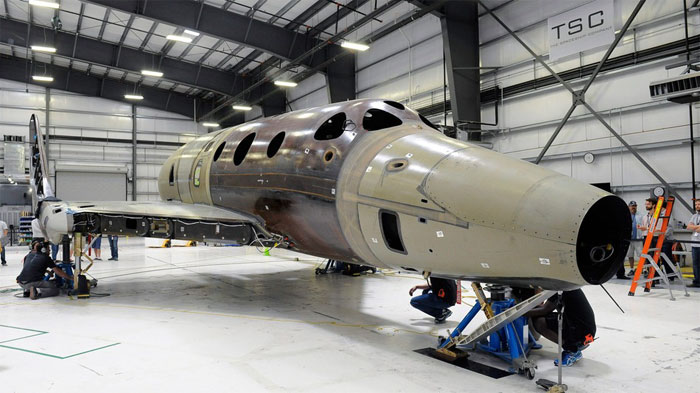
One year ago Saturday, Virgin Galactic's first space plane disintegrated in the skies above Mojave, California, killing one pilot and leaving the other hospitalized.
In the wake of the tragic accident, it was unclear if the private spaceflight company with dreams of sending paying customers to suborbital space would survive, but now, 12 months later, Virgin Galactic's founder, Sir Richard Branson, says the company is back on track.
SEE ALSO: Space travel is dangerous. There will be no tourists.
“The last 12 months everyone’s worked incredibly hard,” Branson told Mashable in an interview. “We’re very much back on track now.” “We’re very much back on track now.”
After the accident, engineers and others working with the company got to work continuing to build the second SpaceShipTwo, which should be ready to start testing by February 2016, according Branson.
“We’ll be unveiling the new spaceship,” said Branson. “And then we go into flight tests.”
On Oct. 31, 2014, SpaceShipTwo was taken high into the sky by its carrier aircraft WhiteKnightTwo. Once released, SpaceShipTwo's engine kicked on, but shortly after it began flying under its own power, the ship broke apart.
Pilot Peter Siebold ejected and parachuted to safety, but co-pilot Mike Alsbury died in the crash. It was the fourth powered test flight of the vehicle.
“Twelve months ago was obviously not a good day,” Branson said.
“For 48 hours [after the accident] I really wasn’t sure whether we should carry on,” he said. “But the 600 engineers and technicians, and the 800 astronauts, made it very clear they wanted to.”
A subsequent investigation by the National Transportation Safety Board (NTSB) found that Alsbury unlocked the ship's "feathering feature" — which is designed to help the ship fly back down to the ground — earlier than expected, leading to the breakup of this ship.
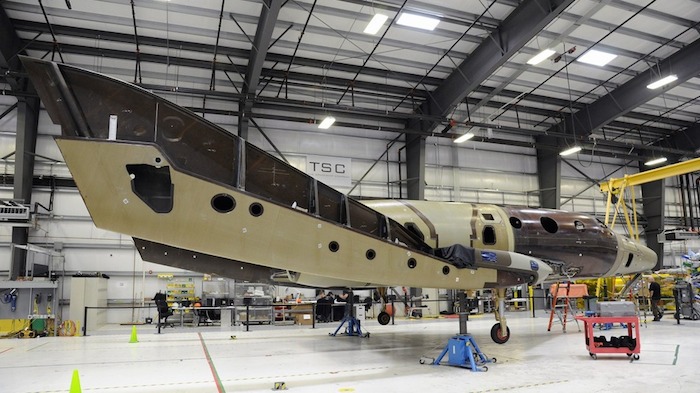
In the wake of the accident, the NTSB had recommendations for Scaled Composites, the company contracted to build the first SpaceShipTwo for Virgin Galactic. According to the investigation, Scaled did not do enough to make it clear that releasing the feathering mechanism could be dangerous before the craft hit a speed of about Mach 1.4.
Now, the building and testing of the suborbital craft is all being done in-house at Virgin Galactic (a handover that was in the works before the 2014 accident).
"I think we are in a much better place than we might have expected in the period immediately after the accident, and that's because our team came together, our customers stuck with us, and honestly, we believe that the vehicle itself is sound," George Whitesides, Virgin Galactic CEO, told Mashable in an interview.
"So, that meant that we could go full speed ahead on finishing the build for the second spaceship," he added. "Where we find ourselves is quite close to finishing that spaceship and putting it into the start of tests."
SpaceShipTwo is designed to bring six passengers up to suborbital space before bringing them back down to Earth.
Eventually, the company hopes to have a fleet of space planes to fly passengers to suborbital space, allowing them to experience weightlessness and see Earth against the blackness of space.
About 700 people have already signed up to take a ride on SpaceShipTwo when it begins flying.
While Branson would not give a firm date for the inaugural flight of SpaceShipTwo — with himself and his family among the passengers — he believes the company is on the right track.
“That’s one thing I’m never going to be in a hurry on,” Branson said about the first flight. “We just have to see how it goes.”
Quelle: Mashable
-
Update: 11.11.2015
.
Woman joins Virgin Galactic test pilot team
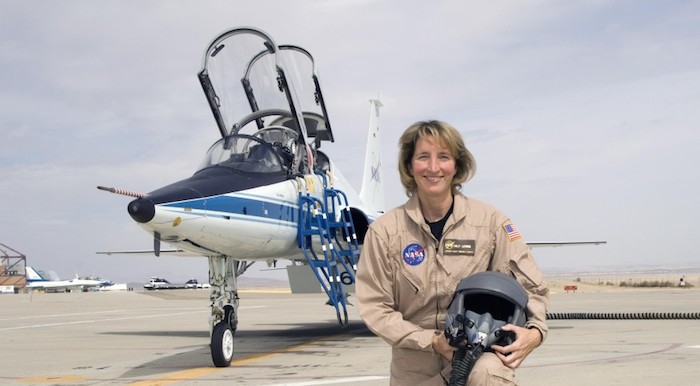
Virgin Galactic has hired Kelly Latimer, a combat veteran and test pilot for NASA, Boeing and the U.S. Air Force, as the first woman to join its six-man pilot corps. PHOTO COURTESY NASA
-
Virgin Galactic has hired a combat veteran and test pilot for NASA, Boeing and the U.S. Air Force as the first woman to join its six-man pilot corps.
Kelly Latimer joins Sir Richard Branson’s aspiring spaceline with more than 6,000 flight hours and more than 1,000 test flight hours under her belt, Virgin Galactic said in a statement this week.
“I have wanted to go to space ever since I can remember doing anything,” Latimer said in a statement.
She said “some of the most meaningful work” she will do at Virgin Galactic will be helping “to complete the vehicles’ design and test and setting up operations before the first flight.”
Virgin Galactic is building a new SpaceShipTwo after its vehicle broke up during a catastrophic test flight last year that killed one pilot and injured another. Virgin Galactic is planning to fly tourists to space from New Mexico’s taxpayer-funded Spaceport America but the company first must restart and complete a test flight program of its spaceship.
A retired U.S. Air Force lieutenant colonel, Latimer served as an instructor for the T-38 trainer jet and the C-17 transport plane and flight-tested C-141 transport aircraft. She flew combat missions during Operations Iraqi Freedom and Enduring Freedom — the government’s name for the war on terrorism in the wake of the 9/11 attacks — and she advised the Iraqi Air Force and its reconnaissance squadron.
During her years in the military, Latimer also served as a flight test squadron commander of 280 personnel and led more than 650 military, contractor and civilian personnel in a program to test airlift and special ops systems, Virgin Galactic said.
Latimer was the first female research test pilot hired by NASA’s Armstrong Flight Research Center, where she conducted experimental flight tests on the Stratospheric Observatory for Infrared Astronomy, known as SOFIA; the T-38, C-17, 747 shuttle carrier aircraft, and the BE200 and T-34 research aircraft.
Later, Latimer worked at Boeing where she conducted the first flight tests of Boeing’s KC-46/767 aerial tanker. At Boeing, Latimer had responsibility for global operations, managing test pilots and other aircrew to prepare for test flights, Virgin Galactic said.
“Kelly’s impressive leadership in operations and experience with heavy aircraft and as a test pilot make her well-suited for our upcoming return to flight,” Virgin Galactic’s Senior Vice President of Operations Mike Moses said in a statement.
Latimer earned a bachelor’s degree in astronautical engineering from the U.S. Air Force Academy and holds a master’s in astronautics from George Washington University.
Quelle: Albuquerque Journal
-
Update: 6.01.2016
.
Will Virgin Galactic Name its Next SpaceShipTwo “Unity”?
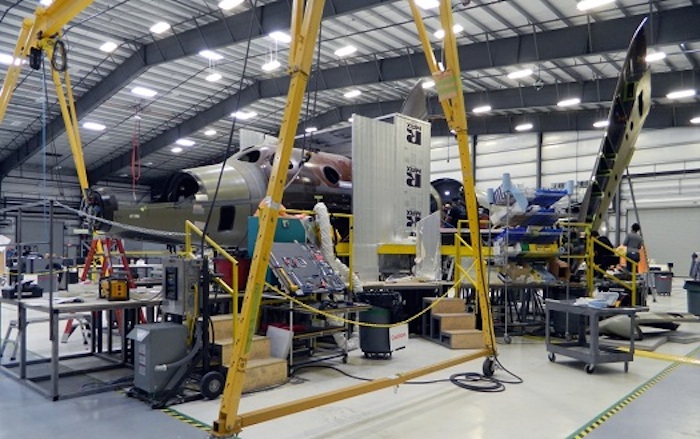
The second SpaceShipTwo under construction. (Credit: Virgin Galactic)
-
Virgin Galactic filed applications in November to trademark the names “Unity” and “VSS Unity”, giving a strong hint about the name of the second SpaceShipTwo the company plans to unveil on Feb. 19.
VSS stands for Virgin Space Ship. The first SpaceShipTwo, which was destroyed in a flight test on Oct. 31, 2014, was named VSS Enterprise.
The applications identify launch services as the goods and services to be delivered under the “Unity” and “VSS Unity” trademarks.
Famed physicist Stephen Hawking is set to name the vehicle during the roll out ceremony next month if he is healthy enough to travel to Mojave, Calif. from his home in England. Virgin Founder Richard Branson will preside over the event.
Quelle: PA
---
Virgin Galactic to unveil new space plane in February — and Stephen Hawking may be there

Virgin Galactic is one step closer to taking hundreds of rich people — and possibly Stephen Hawking — to suborbital space.
Richard Branson's spaceflight company will unveil a highly anticipated new SpaceShipTwo, which is designed to take space tourists to suborbital space, on Feb. 19 at its Mojave Desert facility in California. The ship, which would let passengers see the limb of the Earth from the blackness of space, will feature modifications following the company's deadly accident in 2014, when its first SpaceShipTwo was destroyed, killing one pilot and leaving another hospitalized with serious injuries.
SEE ALSO: Richard Branson: Virgin Galactic's next space plane is coming in February
Since that time, engineers working with the spaceflight company have worked to recover from the accident, updating some aspects of the space plane's design.
"I think we are in a much better place than we might have expected in the period immediately after the accident, and that's because our team came together, our customers stuck with us, and honestly, we believe that the vehicle itself is sound," George Whitesides, Virgin Galactic CEO, told Mashable in October.
Branson has invited famed theoretical physicist Stephen Hawking to the unveiling Branson has invited famed theoretical physicist Stephen Hawking to the unveiling, if his health permits, according to a company spokesperson.
In a Dec. 17 blog post, Branson wrote that Hawking is one of the people he most admires in the world, calling him "an undisputed genius who has opened our eyes to the wonders of the universe, while also happening to be a kind and delightful man."
"He is the only person I have given a free ticket with Virgin Galactic, and he is signed up to fly as a Future Astronaut with us if his health permits it," Branson wrote. Hawking has suffered with a form of motor neurone disease since he was in his early 20s.
"We are very honoured that Stephen has agreed to help us unveil our new spaceship in February if he is feeling well enough," Branson continued. "He has long been an inspiration for all the team, as well as an enthusiastic advocate for our goals of democratising access to space for the benefit of life on earth."
Quelle: Mashable
5194 Views
